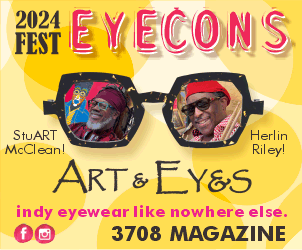METEORIC METERS
Time has a way of eliminating the flash from the pan, but in the Meters’ case, time has only enlarged the legend, bringing about not only the funky Meters, a revival of the original group, but incalculable adulation from a swarm of late-century, Gen-X, funk-and-jam bands. Ironic then that in their day, the Meters were most often compared to Booker T. & the MGs, the Memphis studio band the Meters resembled at least in instrumentation and studio role. But The Meters’ music bore almost no resemblance to the restrained, uniform sound called for in Memphis studios.
In fact, the Meters’ “organized freedom,” as leader Art Neville described their method, had less to do with the studio and much more to do with the street, vernacular culture and neighborhood music of New Orleans. With the original Meters’ output currently being reissued by Sundazed Records in what can only be described as a Collectors’ Edition—remixed versions of the original eight albums, each containing bonus tracks—the luxury of hindsight makes it clear that in addition to their role as funk pioneers, the Meters represent a crucial transition in the survival of indigenous New Orleans culture.
The foundation for the Meters was established in the late 1960s just as brother Art had concluded touring with Aaron Neville behind the soul-message hit, “Tell It Like It Is.” A successful R&B artist since his breakthrough “Mardi Gras Mambo” in the mid-1950s, Art Neville undoubtedly read the writing on the wall: the 1950s and early 1960s era of almost-constant studio and club activity in New Orleans was coming to a close. Gathering brothers Cyril and Aaron together, Art Neville formed the Neville Sounds, employing as a rhythm section friends of Cyril, a decade younger than Art.
Two of those friends, bassist George Porter and guitarist Leo Nocentelli, were students of jazz, especially Nocentelli, who greatly admired the work of Kenny Burrell and Wes Montgomery. The jazz connection is important, because The Meters evolved at a time when the commercial demand for studio R&B may have been waning, but the Crescent City’s predilection for harmonic exploration combined with permutations of the street-parade beat was coming to the fore.
Nurtured in the modern era by Professor Longhair and the studio musicians associated with AFO Records, the contemporary expression of the New Orleans penchant for deep-seated grooves had begun influencing the soul jazz of national artists like Nat and Cannonball Adderley as well as local musicians like Eddie Bo and Willie Tee. It is this strain of influence that is especially evident on the Meters’ mainly instrumental output for the Josie label, contained in the first three reissues. As the group’s approach became more established and more commercially successful, the Meters also began influencing the national scene as a much-in-demand backup band working with Allen Toussaint behind an array of artists that included Lee Dorsey, Dr. John, Robert Palmer, Little Feat and LaBelle.
The group then signed with Warner Brothers and began making albums that expanded the vocal component of their music while embracing the Crescent City’s indigenous culture of Creole songs, Caribbean rhythms and Mardi Gras Indian chants, while continuing to emphasize second-line syncopation.
The ultimate outcome of the second phase of The Meters’ recording career, contained in upcoming releases, was the ground-breaking Wild Tchoupitoulas project of the mid-’70s, which inaugurated both international acclaim for The Neville Brothers and signalled the beginning of a New Orleans revival that continues to this day. In fact, it’s amazing how many selections from Rhino’s recent 2-CD compilation, Funkify Your Life, have become standards in the New Orleans play book, tunes like “People Say,” “Africa,” “They All Ask’d for You,” “Hey, Pocky A-way,” and “Fire on the Bayou.”
The Meters’ master tapes have been a source of some contention ever since Rounder Records issued Good Old Funky Music and The Meters Jam in the early 1990s from outtakes discovered among the masters, to the great displeasure of the band members. What has ensued, in summary, is the repossession of the original tapes by the band members and a deal with Rhino that includes final approval over all releases. And the Sundazed series is being issued from the same master tapes used by Rhino.
While The Meters’ material has undergone a series of reissues, both here and abroad, this is the first time the original albums have been available on CD. To have them lovingly remastered from original tapes makes their appearance just that more welcome. While the band has become contemporary funk heroes, The Meters’ role as a bridge between eras and a first-rate example of how the New Orleans vernacular culture surives, mutates, absorbs, and crystallizes, mixing street and commerce, constitutes an invaluable link in the continuous chain of New Orleans music history.
— Roger Hahn
Musicians are always citing the Meters, especially drummer Zigaboo Modeliste, as major influences. What exactly do they mean? Why were the Meters so revolutionary?
These three discs provide the key to unlocking the Metric Mystery. Everything centers around Zigaboo’s drumming. Almost always he utilizes just a snare drum, a bass drum and the high-hat cymbals. Never was less more: Zigaboo doesn’t exactly drum, he dances. The other three players mimic whatever Zig is doing. Very, very rarely Art Neville (the best singer in the whole Neville family, in my estimation) sings, and when he does, it’s a bizarre cover such as “Wichita Lineman.” Sometimes Zig makes chicken noises or other silly sounds. It’s funky, it’s funny. What the Meters did was take a Mardi Gras parade and convert it into a rock band.
—Bunny Matthews




